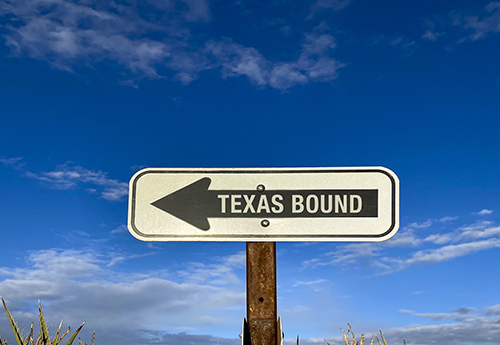The Great Texas Land Rush

How the continued rush of land developers and buyers into Texas has impacted the Austin real estate market
Overview
Texas is undoubtedly one of the hottest markets in the country right now, ranking third in the best performing Metros according to the U.S. Bureau of Labor Statistics, CES. The in-migration of businesses and workforce from California and New York are not only economically driven, but also politically and lifestyle driven. In the wake of the 2020 census both New York and California will lose one congressional seat, while Texas adds two¹. This in-flow also stems from new residents & companies following market validators, such as Tesla, Apple, Amazon, Oracle and BAE Systems. This has resulted in an increase in cost to acquire existing properties, which in turn is driving up demand for developable land. For example, multifamily properties trading at a sub 4.00 Cap leaves buyers better off buying land and developing it themselves.
While often more cost-effective to self-develop, pricing for land continues to increase as developers of product types ranging from cold-store warehouses to single family developments, hunt for land in one of the fastest-growing states in the US. Pricing and availability have pushed developers to suburbs such as Manor, which has seen a near 50% increase in land pricing since mid-summer 2020.
Accelerated Purchase Timelines and Increasing Prices
The market anomalies occurring due to the increase in 1031 Exchanges, cash and speculative buyers is resulting in quick close buyers winning out longer timeline buyers.
- Securitized 1031 exchange offerings raised just under $3.2B in 2020 and 2021 is already on pace for record breaking equity raised of $5.2B.
- The residential market has seen a 28.8% increase in median home sales price compared to the previous year hitting an all-time high of $550,000 in the Austin MSA as of May 2021 with only 0.4 months of inventory available, which is down 1.4 months ².
- Austin added 184 people per day between June 30, 2019 – July 1, 20203.
- Construction pricing due to labor shortages and skyrocketing prices for lumber are creating delays and underwriting challenges for developers.
The Google Earth Effect – Unintentional Deception
Sites may look great from the aerial overview but often what is not shown are the lack of utilities in place in many of Austin’s suburbs and ETJs, often driving the new for PIDs,PUDs,MUDs, etc.
- Outdated aerial images often provide inaccurate descriptions of certain land parcels/areas.
- Buyers are best suited to consult local brokerages and engineers for guidance
Reshaping Austin
Interest in Austin that once dominated East and downtown areas such as Rainey Street and Congress area are now encompassing suburb areas like Manor, Hutto and Georgetown.
- Local buyers and developers are in tune with where activity is headed and have adjusted accordingly.
- Out-of-state investors are slower to shift focus to these areas and are either not yet interested, or take quite a bit more convincing.
- Continued migration to suburbs as a result of the pandemic is likely to continue as people adjust to the luxuries of suburban life (more space, WFH capability, available amenities, etc.)
The Avison Young Land, Development and Industrial team includes John T. Baird, Michael B. Kennedy and Sullivan Johnston. For more information contact [email protected]
¹According to the American Press https://time.com/5958924/2020-census-new-york-california-texas-florida/
³ https://www.bizjournals.com/austin/news/2021/05/04/census-data-austin-metro-population.html
